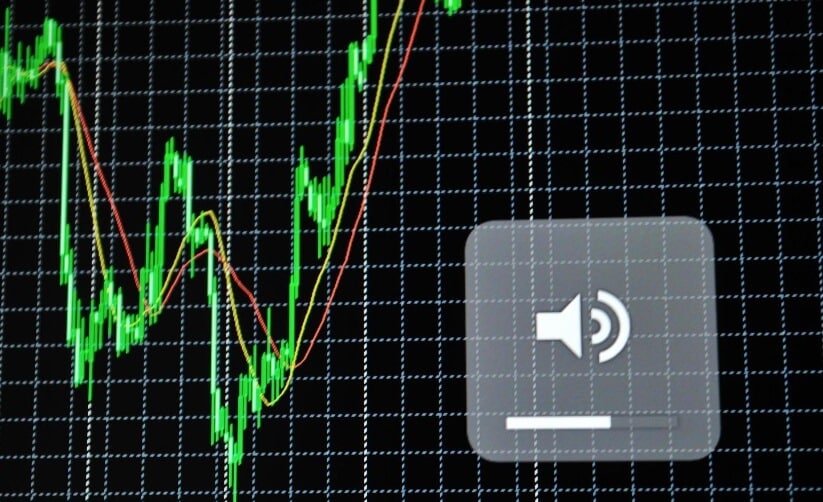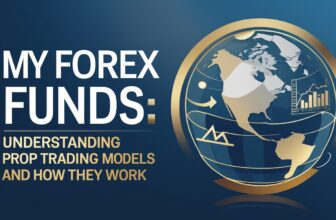
Discover how to trade forex trading in the land down under! In this guide, we delve into the essentials of navigating the Australian forex market. From choosing the right broker to understanding regulatory nuances, embark on your forex journey with confidence.
To start trading forex in Australia, beginner traders can start with at least £1000-£5000 or more to manage risks and absorb potential losses. Forex trading is legal in Australia as long as you use a regulated forex broker licensed by the Australian Securities and Investments Commission (ASIC). Popular regulated forex brokers in Australia include IC Markets, Pepperstone, Axi, Plus500, EasyMarkets, and IG Markets.
Key Takeaways:
- Forex trading involves buying and selling different currencies on the foreign exchange market.
- Currencies are traded in pairs, and the forex market is decentralized, trading 24/5.
- Benefits of forex trading include leverage, flexible trading times, low barriers to entry, and profit potential.
- Start trading forex in Australia with as little as £1000-£5000 or more to manage risks.
- Use regulated forex brokers licensed by ASIC, such as IC Markets, Pepperstone, Axi, Plus500, EasyMarkets, and IG Markets.
How to Trade Forex in Australia
Embarking on your forex trading journey in Australia requires a solid foundation, starting with choosing a trustworthy broker regulated by the Australian Securities and Investment Commission (ASIC). ASIC regulation ensures a broker’s adherence to strict standards, providing you with a secure trading environment. Verify the broker’s credentials directly on the ASIC website to confirm their regulatory status and guarantee a transparent and compliant trading experience.
Forex trading, also known as foreign exchange trading, is the buying and selling of different currencies on the foreign exchange market. It has become an increasingly popular way for individuals to invest and trade. If you are new to forex trading and looking to get started in Australia, this guide covers everything you need to know. Forex trading involves speculating on movements in exchange rates between global currencies. Currencies are traded in pairs, and the forex market is decentralized, trading 24 hours a day, 5 days a week. There are several benefits to forex trading, including leverage, flexible trading times, low barriers to entry, and profit potential.
Understanding Leverage and Regulations in Forex Trading
For those getting started on forex trading, comprehending the intricacies of leverage and regulations is paramount for traders seeking success and risk management. This section delves into the concept of leverage, its implications, and the regulatory framework governing forex trading in Australia.
Leverage in Forex:
Leverage is a double-edged sword in forex trading, amplifying both potential profits and losses. In Australia, leverage is capped for traders to ensure prudent risk management. Major currency pairs typically offer a maximum leverage of 30:1, allowing traders to control a position valued at £30,000 with just £1,000 in their trading account. However, it’s crucial to note that higher leverage intensifies risk, requiring traders to approach it with caution.
Example: Suppose a trader uses 30:1 leverage on a £10,000 position. The trader only needs £333 as margin (10,000 / 30) to open the trade. While this magnifies profit potential, it also means losses can accumulate rapidly if the market moves unfavorably.
Regulatory Landscape in Australia:
The regulatory framework for forex trading in Australia is overseen by the Australian Securities and Investment Commission (ASIC). Introduced in 2021, ASIC regulations align Australian practices with international standards, promoting a secure trading environment. These regulations are in place to protect traders from excessive risk and ensure brokers adhere to stringent financial standards.
Example: ASIC requires brokers to limit leverage on volatile assets, such as cryptocurrency CFDs, to 2:1 (50% margin). This restriction prevents traders from overexposing themselves to the inherent volatility of these instruments.
Balancing Risk and Reward:
Regulations aim to strike a balance between offering traders the flexibility to maximise potential returns and protecting them from catastrophic losses. The prudent use of leverage involves careful consideration of market conditions, risk tolerance, and a thorough understanding of the financial instruments being traded.
Example: A trader with a conservative risk approach may opt for lower leverage, reducing the impact of market fluctuations on their capital. On the other hand, a more aggressive trader might utilise higher leverage to amplify potential profits, accepting the associated heightened risk.
Educational Resources and Broker Disclosures:
To navigate the complexities of leverage, traders are encouraged to utilise educational resources provided by brokers and regulatory authorities. Broker disclosures, such as those mandated by ASIC, play a crucial role in informing traders about the risks associated with leverage and the broker’s commitment to transparency.
Example: Pepperstone, a prominent forex broker, discloses its leverage limits and risk warnings clearly on its website. Traders can find information about leverage restrictions and risk management to make informed decisions.
Conclusion:
Understanding leverage and regulations is integral to fostering a secure and profitable forex trading experience. Traders must approach leverage with caution, considering its potential impact on both profits and losses. Regulatory compliance ensures a level playing field, promoting fairness, transparency, and stability in the Australian forex market. By embracing these principles, traders can navigate the dynamic nature of forex trading with confidence and responsibility.
Compliance and Taxation in Australia: Navigating Legal Framework and Reporting Obligations
In the realm of forex trading in Australia, understanding the legal landscape is imperative to ensure compliance and meet taxation obligations. This section elucidates the legal framework, reporting requirements, and the role of regulatory bodies in fostering a transparent and regulated forex trading environment.
Legal Framework for Forex Trading:
Forex trading in Australia is regulated by the Australian Securities and Investments Commission (ASIC). Compliance with the Corporations Act of 2001 is mandatory for brokers and traders alike. ASIC’s oversight guarantees fair practices, investor protection, and adherence to ethical standards within the forex market.
Example: ASIC-regulated brokers, like IC Markets, prominently display their regulatory status and adherence to legal requirements on their websites. This transparency builds trust among traders and ensures compliance with regulatory standards.
Reporting Obligations for Traders:
Australian citizens and residents engaged in forex trading are obligated to report their income, including profits and losses. Reporting requirements vary based on individual tax status, trading volume, and whether trading is conducted as an individual or under a business entity. Traders must work closely with tax professionals to ensure accurate reporting and compliance with Australian tax laws.
Example: Individual traders may use platforms like MetaTrader to generate detailed trading reports, facilitating the compilation of necessary information for tax reporting. Such tools aid in streamlining the reporting process and ensuring accuracy.
Role of the Reserve Bank of Australia (RBA):
While the RBA primarily focuses on monetary policy, it indirectly influences forex markets through its management of the Australian dollar. The RBA’s efforts to ensure currency stability contribute to the overall economic prosperity of the nation, creating a supportive environment for forex traders.
Example: The RBA’s decisions, such as interest rate adjustments, can impact currency values. Traders monitor RBA announcements to anticipate market movements and align their trading strategies accordingly.
Overview of the Australian Financial Landscape: Navigating the ASX and Regulatory Policies
To comprehend the Australian financial landscape as a forex trader, it’s essential to explore the Australian Securities Exchange (ASX), understand its diverse asset classes, and grasp the regulatory policies shaping the financial environment.
Australian Securities Exchange (ASX)
The ASX serves as the primary stock market in Australia, located in Sydney. Offering a diverse range of asset classes, including equities, futures, derivatives, ETFs, ETPs, and commodities, the ASX provides a comprehensive platform for various financial instruments.
Example: Traders can access ASX’s online platform to explore real-time market data, research reports, and trade different asset classes. The ASX platform’s user-friendly interface enhances the trading experience for investors.
Regulatory Policies and Monetary Oversight
Regulatory bodies, such as ASIC and the Australian Prudential Regulation Authority (APRA), play pivotal roles in ensuring the stability of the Australian financial system. These bodies enforce compliance with financial regulations, safeguarding the interests of traders and investors.
Example: APRA, in collaboration with ASIC, oversees financial institutions to guarantee the stability and integrity of the financial system. These regulatory measures contribute to the overall trustworthiness of the Australian financial landscape.
Market Update: Understanding External Influences
Staying informed about external factors influencing the financial landscape is crucial for forex traders. Economic indicators, global events, and geopolitical developments can impact currency values, necessitating a comprehensive understanding of broader market dynamics.
Example: Recent geopolitical tensions or economic indicators can influence the Australian dollar’s performance. Traders following market updates can adapt their strategies based on these external influences, enhancing their ability to make informed decisions.
Navigating compliance, taxation, and the broader financial landscape in Australia is foundational for forex traders. A comprehensive understanding of legal obligations, reporting requirements, and the role of regulatory bodies empowers traders to operate confidently and ethically within the Australian financial ecosystem. By staying informed and aligning with regulatory standards, traders can harness the opportunities presented by the dynamic world of forex trading in Australia.
How Does Forex Trading Work?
Forex trading works by speculating on the conversion rate of one currency into another. Traders predict whether a currency will increase or decrease in value compared to another currency. The forex market operates in currency pairs, where the value of one currency is determined by its comparison to another currency. Traders can capitalize on changes in currency values by either buying a currency pair if they believe one currency will strengthen or selling a currency pair if they believe one currency will weaken.
Forex trading offers various ways to trade, including derivatives like CFDs (contracts for difference) or spot forex trading. Traders employ terms such as pips (the smallest increment of price movement), leverage (trading with more money than the account balance), margin (the amount required to open and hold a position), and lot sizes (the size of the traded position). Risk management is crucial in forex trading, and traders can use stop loss orders and take profit orders to manage their risk effectively.
“Forex trading allows individuals to speculate on currency movements and potentially profit from market fluctuations.”
There are various forex trading strategies and tips that traders can employ to enhance their trading performance. These strategies include technical analysis, fundamental analysis, and risk management techniques. Traders can also utilize different forex trading platforms to execute their trades. Popular forex trading platforms in Australia include MetaTrader 4 (MT4), MetaTrader 5 (MT5), cTrader, and NinjaTrader.
How to Start Forex Trading in Australia for Beginners
To start forex trading in Australia as a beginner, it is important to first learn the terminology and gain an understanding of the forex market. Key terms to know include pips, bid/ask spread, leverage, margin, limit order, and stop loss order.
Pips
Pips, also known as percentage in points, are the smallest increment of price movement in currency pairs. It represents the change in value of a currency pair. Understanding pips is crucial for calculating potential profits and losses.
Bid-Ask Spread
The bid/ask spread refers to the difference between the buying and selling prices of a currency pair. It represents the cost of trading and can impact the overall profitability of trades.
Leverage
Leverage enables traders to control larger positions with a smaller amount of capital. It essentially allows you to borrow money from the broker to open larger trades. However, leverage can amplify both profits and losses, so it should be used with caution.
Margin
Margin is the amount of money required to open and hold a position. It acts as a form of collateral and is necessary to execute trades. Different brokers have different margin requirements, so it is essential to understand the margin requirements of your chosen broker.
Limit Order
A limit order is an order to buy or sell a currency pair at a specified price or better. It allows traders to enter the market when the price reaches a desired level.
Stop Loss Order
A stop loss order is an order placed to close a trade at a predefined price point. It is used to limit potential losses and protect against unfavorable market movements.
It is recommended to choose a regulated and properly capitalized forex broker that provides the right trading conditions, platforms, and educational resources for beginners. Some popular forex brokers for beginners in Australia include Exness, XTB, XM, FBS, HotForex, and Avatrade.
“Choose a regulated and properly capitalized forex broker that provides the right trading conditions, platforms, and educational resources for beginners.”
Before placing real trades, it is advisable to practice on a demo account to simulate live markets with virtual funds. Demo trading allows traders to get familiar with the broker’s trading platform, test trading strategies, gain experience analyzing currency price charts, and practice opening and closing positions.
Ongoing learning about technical and fundamental analysis is also essential for continuous growth and success as a forex trader in Australia.
Recommended Steps to Start Forex Trading in Australia
- Learn forex terminology and key terms.
- Choose a regulated forex broker.
- Open a demo trading account.
- Practice trading on the demo account.
- Study technical and fundamental analysis.
- Develop a trading plan.
- Start trading with real funds.
Conclusion
Trading forex in Australia presents exciting opportunities for individuals looking to enter the financial market. However, it is crucial to approach forex trading with the right knowledge, risk management strategies, and a well-defined trading plan. This comprehensive guide has provided an overview of forex trading in Australia, covering the basics of forex trading, how the currency markets function, and how beginners can get started in this lucrative market.
By following the recommended steps outlined in this guide and continuously expanding their knowledge and skills, traders in Australia can navigate the forex market with confidence and potentially achieve consistent profits. It is essential for traders to choose a regulated forex broker in Australia, gain a solid understanding of forex terminology, select the best trading platform for their needs, and practice trading on a demo account.
Risk management is paramount in forex trading, and traders are advised to utilize tools such as stop-loss and take-profit orders to manage potential losses. It is crucial to approach forex trading with caution and only trade with capital that one can afford to lose. By adhering to proper education, implementing effective strategies, and following regulatory guidelines, forex trading can provide opportunities for success in Australia and around the world.
FAQ
How do I start trading forex in Australia?
To start trading forex in Australia, you need to choose a regulated forex broker, open an account, deposit funds, and start trading. It is recommended to educate yourself about forex trading, learn about risk management, and practice on a demo account before trading with real money.
What is leverage in forex trading?
Leverage is a tool that allows traders to control a larger position in the market with a smaller amount of capital. However, while leverage can magnify profits, it can also increase losses, so it should be used with caution.
What are the best forex brokers in Australia?
Some of the best forex brokers in Australia include IC Markets, Pepperstone, Axi, Plus500, EasyMarkets, and IG Markets. It is important to choose a regulated broker that suits your trading needs and offers competitive spreads, trading platforms, and customer support.
What are the trading hours for forex in Australia?
The forex market is decentralized and operates 24 hours a day, 5 days a week. The trading day starts in Sydney and moves around the globe through Tokyo, London, and New York, allowing traders to participate at any time.
How much money do I need to start trading forex in Australia?
Many forex brokers in Australia have no minimum deposit requirements, allowing you to open an account with just a few hundred dollars. However, it is generally recommended that beginner traders start with at least $1000-$5000 or more to manage risks and absorb potential losses.
Is forex trading legal in Australia?
Yes, forex trading is legal in Australia. However, it is important to use a regulated forex broker licensed by the Australian Securities and Investments Commission (ASIC) to ensure the safety of your funds and the integrity of your trades.
What are the risks associated with forex trading?
Forex trading carries risks, including the potential loss of capital. The forex market is highly volatile and can experience rapid price movements. It is important to understand and manage risk through the use of stop loss orders, take profit orders, and proper risk management strategies.
How can I learn forex trading in Australia?
There are various ways to learn forex trading in Australia. You can take online forex trading courses, read educational resources, watch video tutorials, join trading communities, and practice on demo accounts. Continuous learning and practice are essential for success in forex trading.
What are the different forex trading strategies?
There are several forex trading strategies, including day trading, scalping, swing trading, and position trading. Each strategy has its own approach and timeframe. It is important to choose a strategy that aligns with your trading goals, risk tolerance, and trading style.
Which forex trading platform should I use in Australia?
The best forex trading platform for you depends on your trading preferences and needs. Some popular forex trading platforms in Australia include MetaTrader 4 (MT4), MetaTrader 5 (MT5), cTrader, and proprietary platforms offered by forex brokers. It is important to choose a platform that is user-friendly, reliable, and offers the tools and features you require.

















